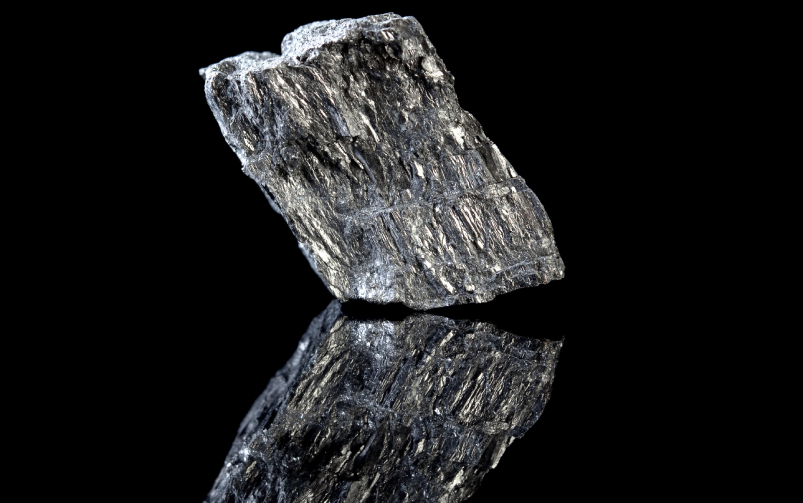Osisko Development Corp has signed agreements that will enable the approval process for its Cariboo gold project in B.C. Courtesy of Osisko Development Corp.
Welcome back to your weekly mining news recap, where we catch you up on some of the news you may have missed. This week’s headlines include an investigation into tailings leaks at Kearl, a report highlighting the state of the Canadian mining industry and an agreement to test hydrogen locomotives.
Canadian mining veteran Pierre Lassonde has made an offer to invest in Teck Resources’ coal business amid Glencore’s struggle to buy the company, as reported by Reuters. Lassonde, co-founder of the world’s largest metals royalty and streaming company and a critic of foreign takeovers of Canadian mining companies, leads a consortium whose efforts would ensure Teck remains a local company. Finance Minister Chrystia Freeland and the Canadian government have also expressed their support for Teck to remain in Canada. Switzerland-based Glencore has previously made two attempts to purchase Teck and split the company into two distinct entities, one focusing on coal and the other on copper and zinc.
Environment and Climate Change Canada (ECCC) has opened a formal investigation into the tailings leaks at the Kearl oil sands site, as reported by the Canadian Mining Journal. The Athabasca Chipewyan First Nation has been demanding since March that the spill be stopped and cleaned, and has also pointed out that the project owners have made no attempt to alert downstream Indigenous communities about the leaks since they began in May 2022. The Kearl oil sands project is 71 per cent-owned by Imperial Oil and 29 per cent by ExxonMobil Canada. Imperial’s CEO and the Alberta Energy Regulator CEO both testified before the Parliamentary environment committee in April, and Imperial stated that the leak was caused by process failures and equipment problems.
Teck and Canadian Pacific Kansas City (CPKC) have agreed to test hydrogen locomotives in the transport of steelmaking coal. The pilot program will start in early 2024 and will run until the end of 2026. CPKC’s hydrogen-powered locomotives would replace diesel-fuelled units and bring steelmaking coal from Teck’s operations in southeastern B.C. to western ports. The pilot program aims to reduce Teck’s Scope 3 and CPKC’s Scope 1 greenhouse gas emissions. As part of the agreement, both companies said they will also invest in technology and infrastructure to strengthen the resilience of the Canadian supply chain.
Allkem Ltd. and Livent Corp. are looking to merge in an all-stock US$10.6 billion deal to become the third largest lithium producer in the world, as reported by Reuters. Livent and Allkem are both currently building hard rock lithium mines in Quebec less than 100 kilometres apart and combining both companies could help the projects develop faster, according to Livent CEO Paul Graves. Graves also said that the merged company would be able to develop more lithium projects as it would have more financial and technical resources to do so. Upon regulatory and shareholder approval, Graves would become CEO of the new company and Allkem chairman Peter Coleman would be its chairman. The new company would be headquartered in the U.S.
Shares of American Eagle Gold jumped 28 per cent on Monday, when Teck Resources pledged to make a strategic investment in the junior miner, as reported by Resource World. Teck will purchase 14.4 million shares for a total of $1.87 million and will own 15 per cent of the company. American Eagle Gold will use the proceeds to fund a 6,000-metre drill program this year at the company’s flagship NAK copper-gold porphyry project in B.C. American Eagle Gold said in a press release that the investment affirms the value it saw in NAK and that it aims to continue developing the property over the coming year. The company announced on Wednesday that it has received a five-year drill permit for the project.
Though iron is not on the federal government’s list of critical and strategic minerals, high-grade iron ore will be critical in decarbonizing the steel industry, wrote Alexandra Lopez-Pacheco in the March/April issue of CIM Magazine. Steelmaking is responsible for seven to nine per cent of global CO2 emissions and high-purity iron ore concentrate, such as that produced in Canada, is an “essential element for low-carbon steel production,” according to David Cataford, chief executive officer of Champion Iron. Steel is also a key material in green technologies such as solar farms, wind turbines, electric vehicles as well as nuclear and hydro plants. Industry leaders agree that there is a big opportunity for Canada to be a leader in decarbonizing steel and that its industry is ready and willing to turn green.
Teck’s Zafranal copper project in Peru has received regulatory approval from the country’s National Service of Environmental Certification for Sustainable Investments (SENACE). Zafranal is a mid-sized copper-gold development project located in the porphyry copper belt in the Arequipa region of southern Peru. The project will produce copper-gold concentrates and have an anticipated throughput of up to 80,000 tonnes of ore per day. Zafranal has an expected mine life of 19 years and during its first five years of production, the mine and concentrator are projected to produce an average of 133,000 tonnes of copper contained in concentrate.
Osisko Development Corp has reached two permitting agreements for the Cariboo gold project in B.C. with provincial government agencies, as reported by Mining Technology. The two agreements—one with the BC Major Mines Office and a second signed with the Ministry of Energy, the Mines and Low-Carbon Innovation and the Ministry of Environment—will establish clear timelines for review and referral of Cariboo’s permit applications, according to Osisko chairman and CEO Sean Roosen. A feasibility study released in January estimated that underground operations at the Cariboo gold project could produce nearly 1.87 million ounces of gold over a 12-year mine life; the project’s probable mineral reserve estimate is 16.7 million tonnes with 2.03 million ounces of gold at a grade of 3.78 grams per tonne.
According to a report by the Mining Association of Canada (MAC), the country needs to invest more in the mining industry if it wants to be a leader in the global energy transition, as reported by the Canadian Mining Journal. MAC said Canada is no longer the top producer of minerals like zinc and nickel that are needed for a low-carbon economy, and that levels of production for several other minerals are not as high as they were 10 years ago. According to the report, this decline in production is partly linked to a decrease in mineral investment. The report noted how the mining industry contributed $125 billion, or five per cent, to Canada’s gross domestic product (GDP) in 2021. It also recommended investing in domestic mineral processing as well as infrastructure, particularly in the North, and also expanding government exploration programs and developing a skilled workforce that has strong Indigenous participation.
A growing number of mining companies and mineral processing businesses are developing technologies to recover valuable and critical minerals from waste material such as mine tailings, wrote Kelsey Rolfe in the March/April issue of CIM Magazine. In one instance, Rio Tinto has upgraded its processing plant at Kennecott in Utah to recover tellurium, a critical mineral used in photovoltaic cells, that is bound up in copper and gold deposits, from the anode-slime created by its copper smelting process. The recovery process adds nothing to Rio Tinto’s carbon footprint and contributes to the energy transition, noted the company. Additionally, Electra Battery Metals has successfully completed the first plant-scale recycling of 10 tonnes of black mass material. Black mass commonly includes critical minerals like nickel, cobalt, manganese, copper, lithium and graphite.
There are more first quarter results this week, following the batch reported in last week’s recap. Here are some highlights:
Kinross Gold produced 466,022 gold equivalent ounces, which the company said was a 23 per cent year-over-year increase, at an all-in sustaining cost (AISC) of US$1,321 per gold equivalent ounce sold. The board declared a dividend of US$0.03 per common share for the quarter. Kinross said it is on track to meet its 2023 production guidance of 2.1 million gold equivalent ounces.
Hudbay Minerals reported consolidated production of 22,562 tonnes of copper at an AISC of US$2.07 per pound and 47,240 ounces of gold. The company is maintaining its 2023 consolidated production guidance of 100,000 to 128,000 tonnes of copper, stating that its first quarter production was “in line with quarterly cadence expectations.” Hudbay’s adjusted earnings before interest, taxes, depreciation and amortization (EBITDA) was US$101.9 million, a decrease compared to the EBITDA of US$124.7 million in the fourth quarter of 2022, which the company attributed to lower copper and zinc sales volumes.
B2Gold produced 266,856 ounces of gold at a consolidated AISC of US$1,060 per ounce sold, which is lower than the company’s annual guidance range of US$1,195-1,255 per ounce due to lower cash operating costs as well as the timing of capital investment that B2Gold expects to make later in the year. The company paid a quarterly dividend of US$0.04 per common share. B2Gold stated that all of its operations are on track to meet or exceed their annual production guidance ranges. The company also completed the acquisition of Sabina Gold and Silver Corp during the quarter.
Suncor Energy reported a total upstream production of 742,100 barrels of oil equivalent per day and refinery throughput of 367,700 barrels per day. Production at its Fort Hills mining operation was lower due to work on its mine improvement plan. Following the end of the quarterly reporting period, the province’s regulatory agency announced it will reconsider its approval of that plan.
Iamgold produced 113,000 ounces of gold from its continuing operations at an AISC of US$1,525 per ounce sold. Its EBITDA from continuing operations was US$68.4 million and its adjusted EBITDA was US$83 million. The company reaffirmed its attributable production guidance for 2023, which is expected to be 410,000 to 470,000 ounces of gold.
Imperial Metals reported consolidated production of 10,155,001 pounds of copper and 13,129 ounces of gold. The company’s adjusted EBITDA was $5.9 million, compared to a loss of $13.4 million in the first quarter of 2022; the company noted that revenue variations were impacted by the restart of operations at its Mount Polley mine in June 2022.
Hecla Mining produced 4,041,878 ounces of silver, a 10 per cent increase over the previous quarter, at an AISC of US$8.96 per ounce, and 39,717 ounces of gold. It also produced 13,236 short tons of lead and 15,795 short tons of zinc from its Greens Creek and Lucky Friday mines. The company’s adjusted EBITDA was US$61.9 million.
Wesdome Gold Mines reported production results of 28,368 ounces of gold at an AISC of $1,977 per ounce of gold sold. The company’s EBITDA was $26.1 million. Wesdome said it was well-positioned to achieve its 2023 production guidance of 110,000 to 130,000 ounces of gold, and that it was making excellent progress on the extension of the production ramp at its Kiena gold mine in Quebec, which should improve the company’s unit economics in 2024.
Some of the other companies that released quarterly results this week include McEwen Mining, Torex Gold, Pan American Silver, Coeur Mining, Lundin Gold, Largo Resources, Jaguar Mining and Skeena Resources.
That’s all for this week. If you’ve got feedback, you can always reach us at editor@cim.org. If you’ve got something to add, why not join the conversation on our Facebook, Twitter, LinkedIn, or Instagram pages?




